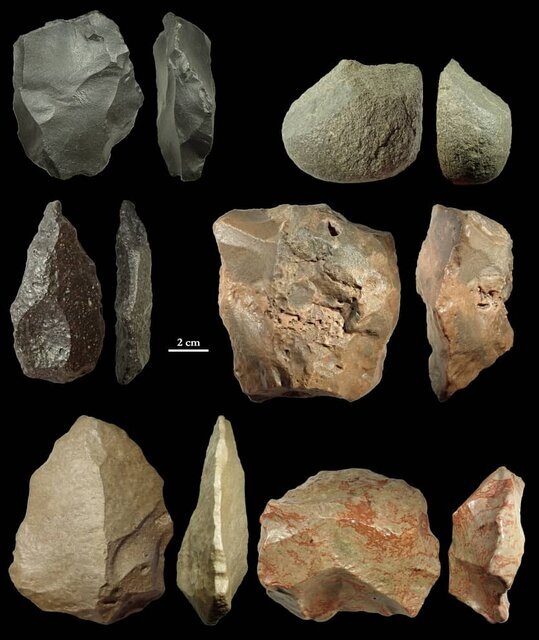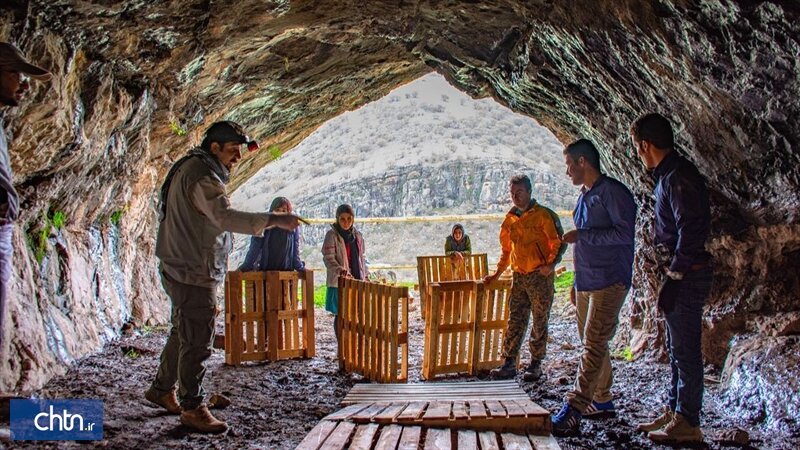The article “Archaeologists find new evidence of Paleolithic era in Iranian cave” was published in the Tehran Times on November 4, 2019. The version printed below has been edited from its original version in the Tehran Times.
====================================================================
Excavations in a cave in western Iran have shed new light on the history of the region, which has previously proved to have links to the Paleolithic times. As noted by Hajat Daribi (the senior Iranian archaeologist) to local news outlets:
“An analysis of the sediment layers in the cave, conducted by a joint Iranian-Danish [archaeological] delegation, revealed that the cave bears evidence of the Lower Paleolithic, Middle Paleolithic, and Upper Paleolithic ages”.
The Paleolithic, also called the Old Stone Age, is a period in human prehistory distinguished by the original development of stone tools that covers c. 99% of human technological prehistory. It extends from the earliest known use of stone tools by hominids c. 3.3 million years ago, to the end of the Pleistocene c. 11,650 cal BP.

As reported by Afshin Majlesi of the Tehran Times (May 9, 2021): “A new study reinforces a hypothesis that the Iranian plateau was like a bridge between East and West during the Pleistocene epoch, which began about 2.6 million years ago and lasted until about 11,700 years ago” (Image and description: Tehran Times).
The cave was first excavated in 1974 by a team of Danish experts led by archaeologist Mortensen Peter who was able to discover evidence of the three Paleolithic periods, which at the time yielded poor information about the sequence of the findings. Daribi noted that:
“… no carbon dating of the cave was available beforehand, as in other Stone-Age areas in central Zagros [mountain range].”
As further averred by Daribi, the upper archaeological layers of the cave have yielded potteries and other objects that date from the Late Bronze Age (LBA), Seleucid era, Sassanid rea and [early] Islamic times.
In other significant archaeological findings in western Iran, archaeologists discovered in May further evidence for its Paleolithic residents in Kaldar cave, Lorestan province. The project sheds new light on Middle to Upper Paleolithic transition in Iran.

Archaeologists at the site of the Kaldar cave (Source: Tehran Times & CHTN). For further informaiton see … “Kaldar Cave in Iran estimated to date over 63,000 years”…
The onset of the Paleolithic Period, according to Encyclopedia Britannica, has traditionally coincided with the first evidence of tool construction and use by Homo some 2.58 million years ago, near the beginning of the Pleistocene Epoch (2.58 million to 11,700 years ago). In 2015, however, researchers excavating a dry riverbed near Kenya’s Lake Turkana discovered primitive stone tools embedded in rocks dating to 3.3 million years ago—the middle of the Pliocene Epoch (some 5.3 million to 2.58 million years ago). Those tools predate the oldest confirmed specimens of Homo by almost 1 million years, which raises the possibility that toolmaking originated with Australopithecus or its contemporaries and that the timing of the onset of this cultural stage should be reevaluated.



